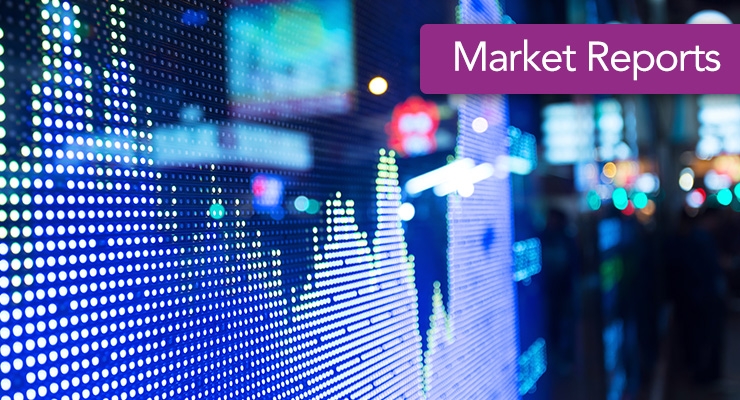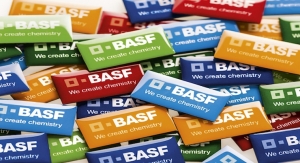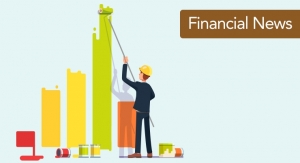03.07.19
The global kaolin market size was valued at USD $5.42 billion in 2018 and is expected to witness a CAGR of 8.8 percent from 2019 to 2025. Rising demand for ceramic products in the housing and construction industry coupled with increasing use of fiberglass in automobile and aerospace applications are expected to drive the market over the forecast period.
Ceramic sanitary ware products, such as washbasins, shower plates, toilet bowls, and bathtubs, have characteristics like corrosion resistance, abrasion resistance, and glossy surface finish, which make them a superior alternative to steel and other metallic products.
These products are increasingly utilized in residential and commercial constructions across the globe. Growing population and enhanced standards of living are further expected to fuel the demand for ceramic products. These factors are estimated to result in an increased demand for kaolin, thereby boosting the global market growth over the forecast period.

Fiberglass finds application in the automotive and aerospace sectors as it helps reduce the weight of the structure, thus improving efficiency. Usage of fiberglass composite also helps reduce CO2 emission levels from vehicles. The introduction of Corporate Average Fuel Economy (CAFÉ) standards in the U.S. has been one of the key reasons for a significant rise in the utilization of lightweight materials like fiberglass.
Initiatives undertaken by the governments of Bangladesh and India to promote literacy are expected to result in high demand for paper, consequently driving the market growth over the forecast period. However, the threat of substitution from calcium carbonate for manufacturing paper may hamper the demand growth over the coming years.
Paper application segment led the global industry in 2018. The increasing use of kaolin as filler is anticipated to drive the paper segment over the forecast period as it is cheaper than conventional wood paper filler. In the paper industry, it is used as a paper coating to improve gloss, smoothness, and printability. As a filler, it improves the opacity and ink receptivity to the paper sheet. However, the use of ground calcium carbonate as a substitute can critically impact the segment growth. Another key challenge for the growth of the paper sector is the rising prominence of electronic news media platforms.
Fierce competition from electronic platforms has diminished the share of print media. Thus, the rising prominence of digital or electronic platform among millennials may hinder the growth over the coming years. Digital platforms are attracting significant advertisers and thus, directly affecting the growth of print media, especially in the North America and Europe regions. Thus, reducing demand for paper is likely to affect the demand for kaolin products over the forecast period. The fiberglass application was valued at USD $341.3 million in 2018 and is projected to be the fastest-growing segment from 2019 to 2025.

Fiberglass is used for the manufacturing of a wide range of products as it is lightweight and extremely strong. Finished fiberglass products are mainly used as reinforcing agents for molded and laminated plastic applications being less brittle and having good bulk strength properties. The automobile industry is the key driver of the fiberglass market, which is expected to fuel the demand for kaolin as it is one of the ingredients used in the manufacturing of fiberglass.
The housing industry caters to the demand for ceramic-based products, which includes sanitary ware and tiles. Kaolin is the key ingredient in the production of ceramic tiles and sanitary ware. Government-led schemes and initiatives are expected to drive the demand for sanitary ware over the coming years. For instance, Swachh Bharat Mission by the government of India, which aims to build nearly 10 million toilets by 2022.
In terms of revenue, Asia Pacific was the largest regional market in 2018. Growing paper packaging segment in this region is assisting the market development. In 2017, the paper packaging segment observed a sales volume of nearly 89.4 billion units in the Asia Pacific region.
These products are increasingly utilized in residential and commercial constructions across the globe. Growing population and enhanced standards of living are further expected to fuel the demand for ceramic products. These factors are estimated to result in an increased demand for kaolin, thereby boosting the global market growth over the forecast period.

Fiberglass finds application in the automotive and aerospace sectors as it helps reduce the weight of the structure, thus improving efficiency. Usage of fiberglass composite also helps reduce CO2 emission levels from vehicles. The introduction of Corporate Average Fuel Economy (CAFÉ) standards in the U.S. has been one of the key reasons for a significant rise in the utilization of lightweight materials like fiberglass.
Initiatives undertaken by the governments of Bangladesh and India to promote literacy are expected to result in high demand for paper, consequently driving the market growth over the forecast period. However, the threat of substitution from calcium carbonate for manufacturing paper may hamper the demand growth over the coming years.
Paper application segment led the global industry in 2018. The increasing use of kaolin as filler is anticipated to drive the paper segment over the forecast period as it is cheaper than conventional wood paper filler. In the paper industry, it is used as a paper coating to improve gloss, smoothness, and printability. As a filler, it improves the opacity and ink receptivity to the paper sheet. However, the use of ground calcium carbonate as a substitute can critically impact the segment growth. Another key challenge for the growth of the paper sector is the rising prominence of electronic news media platforms.
Fierce competition from electronic platforms has diminished the share of print media. Thus, the rising prominence of digital or electronic platform among millennials may hinder the growth over the coming years. Digital platforms are attracting significant advertisers and thus, directly affecting the growth of print media, especially in the North America and Europe regions. Thus, reducing demand for paper is likely to affect the demand for kaolin products over the forecast period. The fiberglass application was valued at USD $341.3 million in 2018 and is projected to be the fastest-growing segment from 2019 to 2025.

Fiberglass is used for the manufacturing of a wide range of products as it is lightweight and extremely strong. Finished fiberglass products are mainly used as reinforcing agents for molded and laminated plastic applications being less brittle and having good bulk strength properties. The automobile industry is the key driver of the fiberglass market, which is expected to fuel the demand for kaolin as it is one of the ingredients used in the manufacturing of fiberglass.
The housing industry caters to the demand for ceramic-based products, which includes sanitary ware and tiles. Kaolin is the key ingredient in the production of ceramic tiles and sanitary ware. Government-led schemes and initiatives are expected to drive the demand for sanitary ware over the coming years. For instance, Swachh Bharat Mission by the government of India, which aims to build nearly 10 million toilets by 2022.
In terms of revenue, Asia Pacific was the largest regional market in 2018. Growing paper packaging segment in this region is assisting the market development. In 2017, the paper packaging segment observed a sales volume of nearly 89.4 billion units in the Asia Pacific region.
Thus, steady demand from this sector is likely to drive the demand for kaolin in APAC over the forecast period. In North America, stagnant newsprint paper sector is likely to affect the regional growth. The shift towards digital media and electronic platforms for information and entertainment is likely to be one of the key restraints.
Digital platforms are attracting significant advertisers and thus, directly affecting the growth of print media in the region. Europe accounted for 27.56 percent of the global market share, in terms of volume, in 2018. Increasing demand for eco-friendly products in Europe coupled with increasing application scope is projected to open new growth opportunities for the market over the coming years. Central and South America accounted for 5.8 percent of the global market, in terms of volume, in 2018. The rebounding construction sector of Brazil and other key regional countries is likely to drive the demand for ceramic products. Thereby, posting stable growth opportunities for the kaolin industry.
Digital platforms are attracting significant advertisers and thus, directly affecting the growth of print media in the region. Europe accounted for 27.56 percent of the global market share, in terms of volume, in 2018. Increasing demand for eco-friendly products in Europe coupled with increasing application scope is projected to open new growth opportunities for the market over the coming years. Central and South America accounted for 5.8 percent of the global market, in terms of volume, in 2018. The rebounding construction sector of Brazil and other key regional countries is likely to drive the demand for ceramic products. Thereby, posting stable growth opportunities for the kaolin industry.

















